Five Decades of MCHG Group
Alvaro Ortega
Alvaro Ortega establishes the Minimum Cost Housing Group (MCHG)
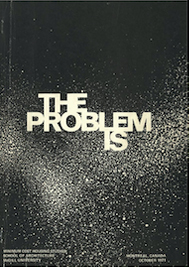 The Problem Is no.1
The Problem Is no.1
First year of research on alternative building materials and sanitary aspects of housing in rural or urban areas
The Ecol House
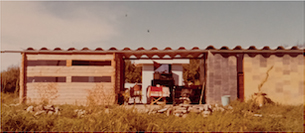
McGill’s Macdonald Campus, Ste-Anne-de-Bellevue, Quebec, Canada
A demonstration project exploring sulphur concrete, sanitation, solar distillation, modular construction, low-cost materials and water atomization. It is a self-sufficient, low-cost house, and the first house ever built in suphur concrete.
 The Problem Is no.2
The Problem Is no.2
“The Ecol Operation: Ecology + Building + Common Sense”
 The Problem Is no.3
The Problem Is no.3
“Stop the Five Gallon Flush! A Survey of Alternative Waste Disposal Systems”
The Saddle Lake Project
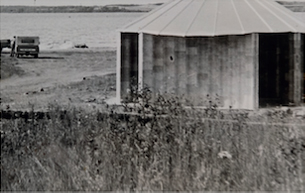
Saddle Lake Indian Reserve, Alberta, Canada
A field application of Ecol exploring how First Nations communities could use sulphur concrete to meet their own needs. The building is shaped by four curved sulphur-concrete walls and serves as a community building.
Exhibition “Recover, Recycle, Reuse”

By MCHG at the School of Architecture, McGill University
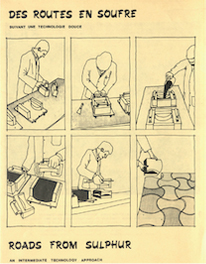 The Problem Is no.4
The Problem Is no.4
“Roads from Sulphur: An Intermediate Approach”
Maison Lessard

Quebec, Canada, a field application of Ecol for a cold climate.
A four-bedroom house exploring sanitation, heating and insulation, and sulphur concrete as a building material. Commissioned by a private client.
Rooftops Wastelands
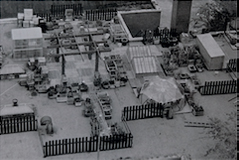
Montréal, Canada
A demonstration rooftop garden above the University Settlement community centre in Montréal. The project explores solar cold frames, hydroponics, soil/heat exchangers, heat storage and composting.
Ecol II
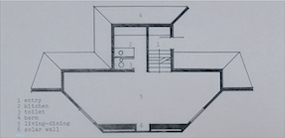
A two-storey version of Ecol for a North American context adding rooftop gardens, a Trombe wall and a composting toilet. The group’s first project that does not involve sulphur concrete.
Proposed as a demonstration project both for the Canadian Urban Demonstration Program and for the United Nations Conference on Human Settlements of 1976, but not realised.
 The Problem Is no.5
The Problem Is no.5
“Sulphur Concrete and Very Low-Cost Housing”
 The Problem Is no.6
The Problem Is no.6
“Use it Again, Sam”
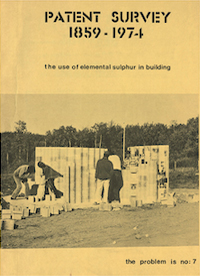 The Problem Is no.7
The Problem Is no.7
“Patent Survey 1859-1974: the use of elemental sulphur in building”
‘Recover, Reuse, Recycle’
A small shelter exploring sulphur concrete, recycling and garbage housing, proposed for the United Nations Conference on Human Settlements of 1976, but not realised.
Designed by Witold Rybczynski and Vikram Bhatt in collaboration with Martin Pawley
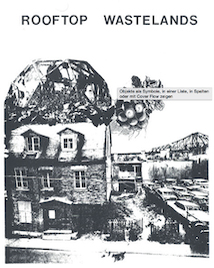 The Problem Is no.8
The Problem Is no.8
“Rooftop Wastelands”
The Mini-Mister
A portable, manually pressurized mist shower. Marketed for less than 10 dollars. Designed by Bernard Lefebvre and Vikram Bhatt.
 The Problem Is no.9
The Problem Is no.9
“Water Conservation and the Mist Experience”
Retractable Insulation for Greenhouses

“Energy Conservation in Greenhouses Through The Use of Retractable Insulation” by Witold Rybczynski and Vikram Bhatt. Research on an economic efficient retractable insulation for crop greenhouses.
How the Other Half Builds Vol.1
“Space”
Documenting the physical performance of informal housing in less-developed countries, including information on spatial requirements, low-cost construction materials, and non-conventional servicing and infrastructure technologies.
Ahmedabad Sites and Services Report
Low Income Urban Shelter – Aranya

Sketches for the Aranya Township Demonstration Project

1986-1991
 Human Settlements Training India
Human Settlements Training India
Final Report by Witold Rybczynski and Vikram Bhatt
A set of audio-visual material introducing new ideas for planning low-income urban housing, it is based on several years of field work and research that has been carried out by the Vastu-Shilpa Foundation, Ahmedabad.
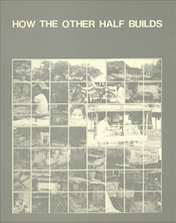 1986
1986
How the Other Half Builds Vol.2
“Plots”
Trying to understand how and why plots acquire certain physical characteristics
Physical Aspects Of Sites And Services
By Vikram Bhatt
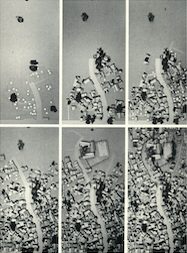 Study Model on Human Settlement Development
Study Model on Human Settlement Development
Documented in “How the Other Half Builds Vol.3”
Housing Development Project in Sichuan
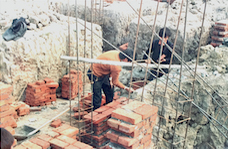
An Architecture for the Developing World
Aranya Township
 Seventeen Years of Minimum Cost Housing
Seventeen Years of Minimum Cost Housing
Open House International, special issue on MCHG, guest edited by Witold Rybczynski and Vikram Bhatt
 How the Other Half Builds Vol.3
How the Other Half Builds Vol.3
“The Self-Selection Process”
Documentation and results of a design simulation exercise, based on the findings reported in the first two volumes.
Beijing Renewal Project Collaboration
 Patterns Of Living Vol.1
Patterns Of Living Vol.1
“Architectural research in India"
Case study of an Indian industrial township
Tribeni Tissues, West Bengal
 Housing a Billion Vol.1
Housing a Billion Vol.1
“Design Ideas for Rural China”
Shifang, China
An innovative user-responsive approach that recognizes the advantages and disadvantages of resident population relocation as a strategy in typical solutions to rural housing problems.
Contains general background information on housing in China.
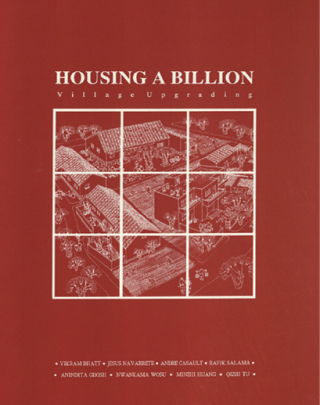 Housing a Billion Vol.2
Housing a Billion Vol.2
“Village Upgrading”
Jianlu, China
The result of our concerns with the socio-cultural and economic implications or present relocation practices. An alternative developmental approach – Village Upgrading – is presented as a more viable and sensitive way to address the housing problems of farmers.
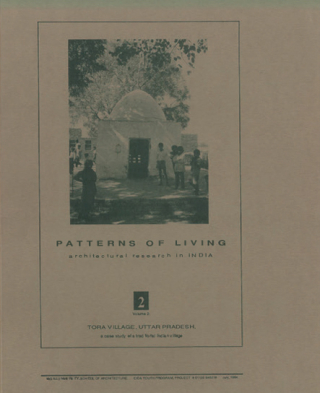 Patterns Of Living Vol.2
Patterns Of Living Vol.2
“Architectural research in India”
A case study of a traditional Indian village
Tora Village, Uttar Pradesh
1995-1996
Upgrading Proposal for La Esperanza, Zihuatanejo, Mexico
Studies to develop upgrading proposals, carried out from September 1995 to April 1996 in collaboration with the municipal government of Zihuatanejo.
Fingers of Hope

(Los dedos de la Esperanza)
Upgrading proposal for La Esperanza
Zihuatanejo, Mexico
Housing at Kahnawake
By Prof. Vikram Bhatt, Prof. Julia Bourke and students
Pre-design research for housing design solutions
 Gender and Native American Housing Project
Gender and Native American Housing Project
L’habitat autochtone et le genre: une approche sensible de la population Crie de Chisasibi by Vikram Bhatt and M. Chagny
2001-2005
Reconstruction and Cultural Expressions

2002 Exhibition about the reconstruction efforts of the Vastu-Silpha Foundation in Ahmebadad
Post-occupy study of the Aranya Housing Project
2004-2007
Making the Edible Landscape

Rosario – Argentina, Kampala – Uganda, Colombo - Sri Lanka
Research, design and construction project that demonstrates the value of urban agriculture as a permanent feature in city planning and housing design
2004
North American Sustainability, Housing and Community Consortium (NASHCC)
A four-year continental exchange program to advance sustainable housing through community partnership
Making the Edible Landscape
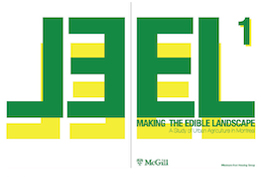
A Study of Urban Agriculture in Montreal
Edited by Vikram Bhatt and Rune Kongshaug
Documents alternative use of urban land, and in particular its use for food production in Montréal, Canada
2007 – ongoing
Making the Edible Campus
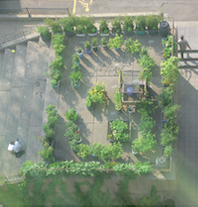
McGill University, Montréal Canada
A 120 square meter container garden that involved citizens in the creation of green, edible community spaces, demonstrating how productive planting can be woven into urban spaces
2007
III World Urban Forum Vancouver
Showcasing “Making the Edible Landscape”
Nutri-Centre Lasalle

Collective Garden
National Urban Design Award
Making the Edible Campus

2008-2012
Paysage Solidaire

Community greening project integrating urban agriculture in Mercier-Hochelaga-Maisonneuve, Montréal, Canada
Designing Edible Landscapes
Open House International, guest edited by Vikram Bhatt and Leila Marie Farah
Gardenopoly

A board game about Urban Agriculture in Montréal
It is designed by students, testing the players knowledge on urban gardening.
2015-2016

Urban Agriculture Stories, Montréal
Information about the food production and food security statement in the Montreal Island, highlighting the importance of urban and peri-urban agriculture activities within the island and considering two leading examples: Santropol Roulant and Lufa Farm.
Northern Urbanism and Infrastructure: the case of Kuujjuarapik/Whapmagoostui

The MCHG worked in close collaboration with key municipal members of Kuujuarpik to generate design proposals and ideas that would open a conversation about he village’s future growth strategies for its new village master plan.
Kuujjuaq Hackathon Pavilion
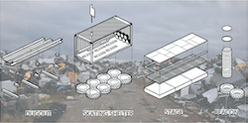
Kuujjuaq, Québec, Canada
An all-season outdoor sports pavilion made from building materials found in the village dump.
A design team from Quebec and village residents constructed the pavilion together during a five-day event in September 2017.
National Urban Design Award

Kuujjuaq Hackathon Pavilion 2017
Reading Aranya
Township, Indore, India
Contemporary post occupancy study of the Aranya development
Design for the Global Majority Exhibit
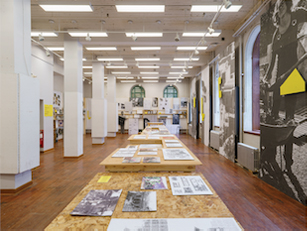
From pioneering sulfur block construction to self-sustaining house prototypes, in-depth field research, and self-publications, the “Design for the Global Majority” exhibition series showcased the MCHG’s dedication to addressing global housing challenges through practical, community-driven design over five decades.
MCHG Timeline 1970-1974

MCHG Timeline 1975-1979

MCHG Timeline 1980-1989

MCHG Timeline 1990-1999

MCHG Timeline 2000-2009

MCHG Timeline 2010-2023




